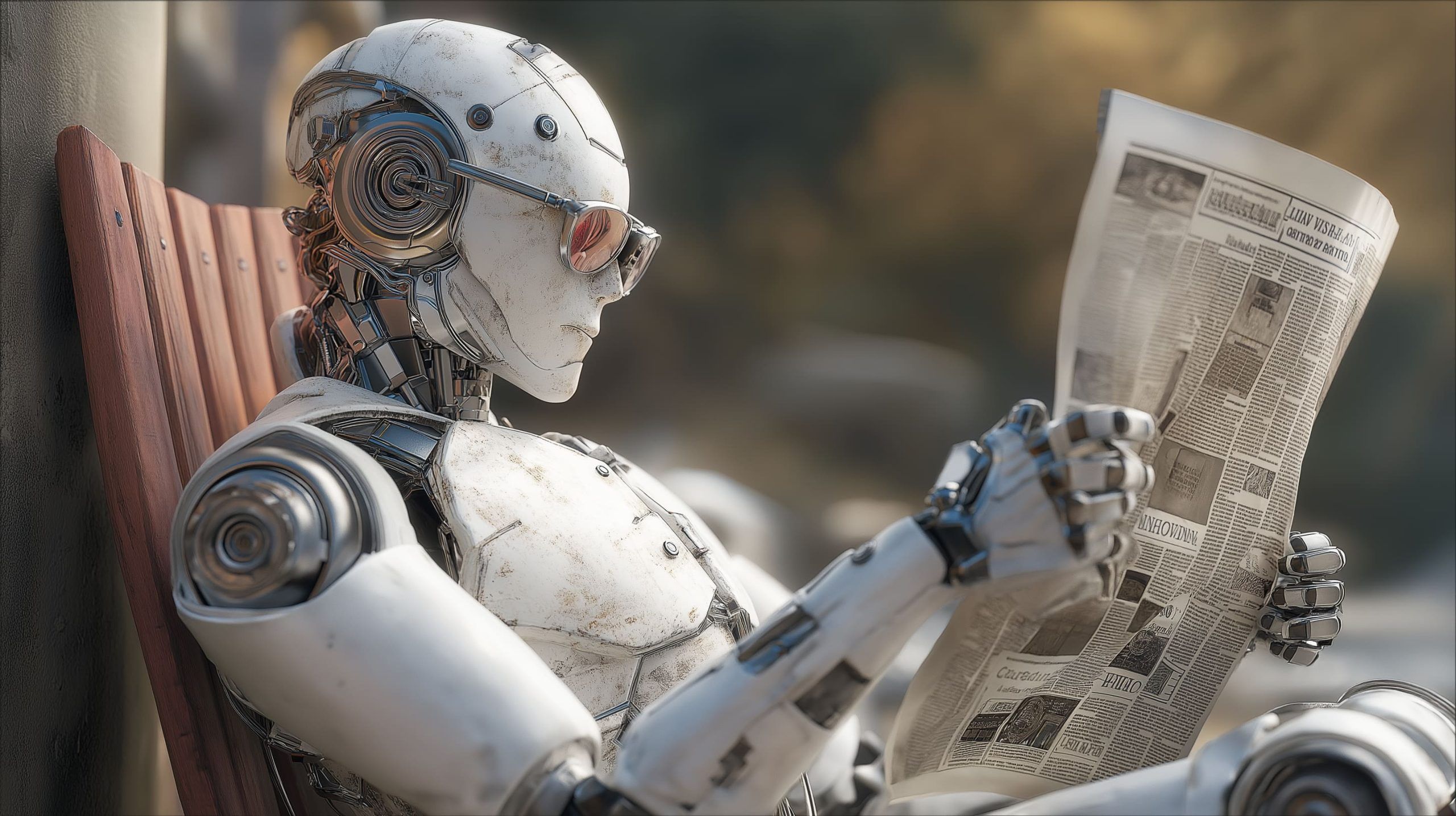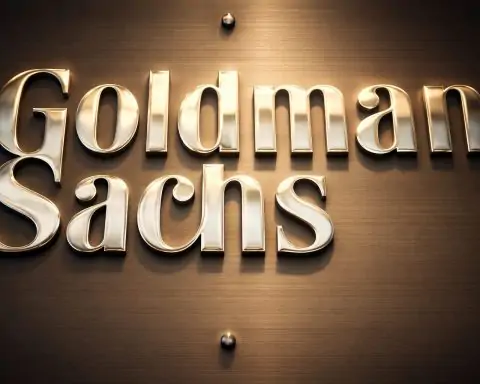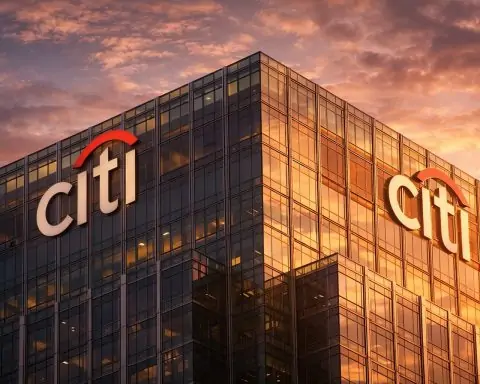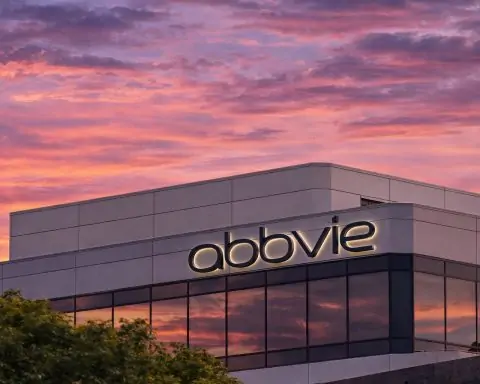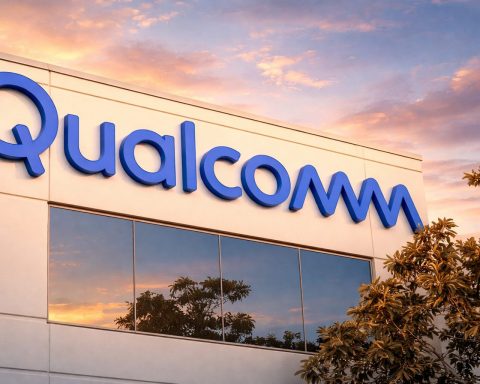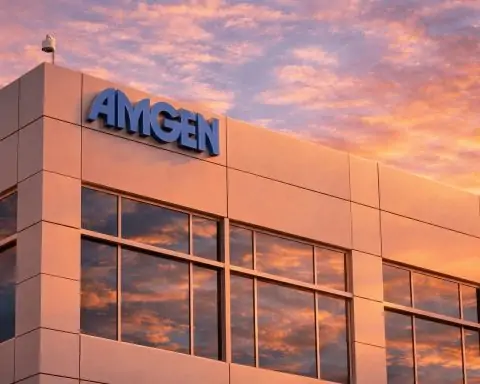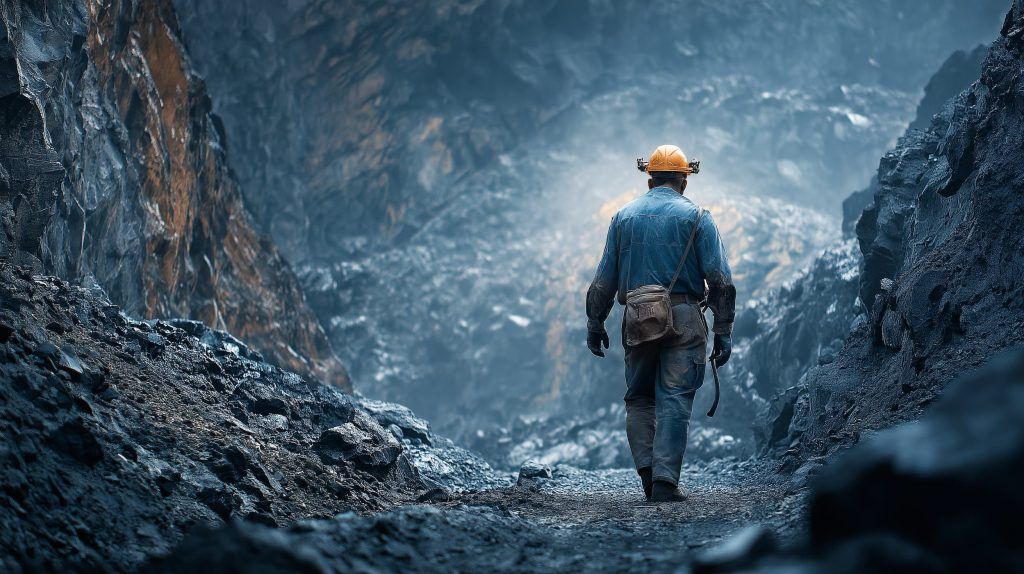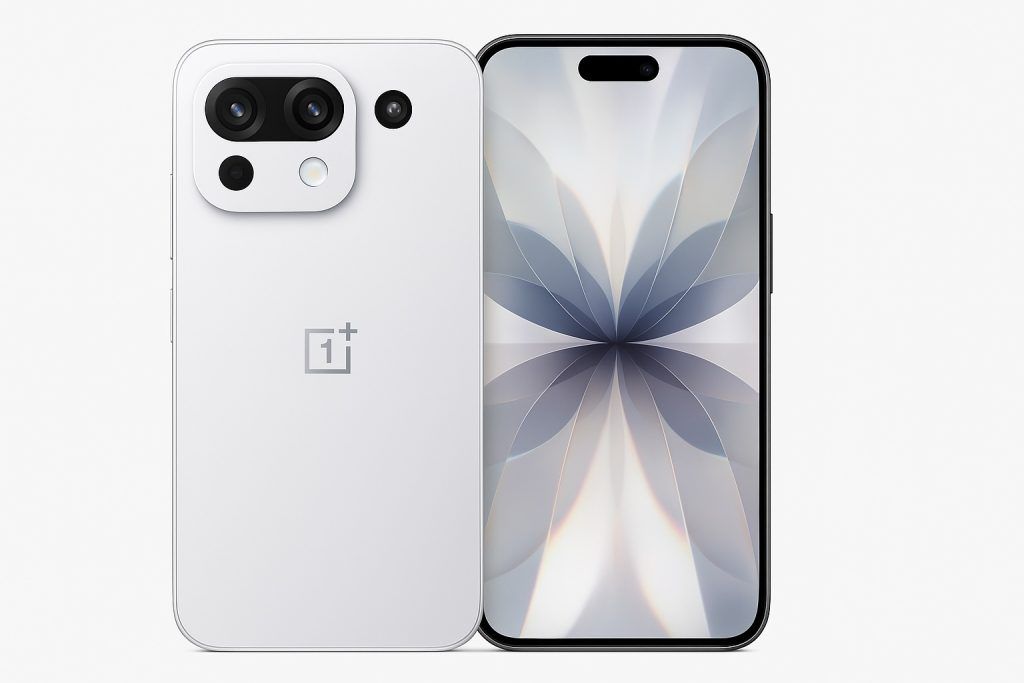- Nvidia leads the charge: Nvidia’s announcement of a potential $100 billion investment in OpenAI sparked an equity rally [1]. Bank analysts at UBS reiterated a Buy on NVDA, estimating the deal could add ~$400 billion in revenue and cement Nvidia’s path toward a $3–4 trillion AI market by 2030 [2] [3].
- Tech giants double down: Microsoft said it will bring Anthropic’s Claude models to its 365 Copilot suite, expanding beyond OpenAI’s tech [4]. Meta unveiled “Vibes,” an AI-generated video feed, and is in talks to use Google’s Gemini for ads, signaling an AI-fueled revamp [5] [6]. Amazon, despite investing ~$8B in Anthropic, saw several AI VPs depart, reflecting internal shake-ups [7] [8].
- Chipmakers and partnerships: Nvidia is also investing in hardware – it just poured $5B into Intel (taking ~4% of the company) to co-develop chips [9]. Intel, in turn, is courting Apple for funding [10]. Qualcomm launched a new “Snapdragon X2 Elite” PC chip with remote-management features aimed at businesses [11] [12], underscoring broad industry moves to build AI-ready infrastructure.
- Automotive AI hype: Tesla’s autonomous vision hit new highs. Wedbush analyst Dan Ives forecast that Tesla’s robotaxi business “could soon add $1 trillion to Tesla’s market cap” [13], echoing bullish trillion-dollar estimates from other strategists. CEO Musk’s xAI is even suing Apple and OpenAI for anti-competitive practices, highlighting the high stakes in AI-driven automotive tech [14] [15].
- Record flows, bubbly fever: Investors poured billions into tech and AI stocks. U.S. equity funds saw their first inflow in weeks (about $12B) after Nvidia’s OpenAI news, and Barclays’ Ajay Rajadhyaksha noted that the “AI revolution, Fed cuts and fading tariff uncertainty” should keep equities strong [16]. Indeed, Reuters reports the top AI-heavy stocks have soared ~30% in 2025 vs 8% for the rest of the market, with Nvidia up ~350-fold over the decade [17].
- Earnings and forecasts: AMD posted record Q2 revenue (~$7.7B, +32% YoY) on booming chip demand, with CEO Lisa Su targeting “tens of billions” in AI sales [18]. Palantir and other software firms continue upgrading guidance on AI demand. Analysts warn, however, that valuations are high – one advisor calculates AI investments need $2–3 trillion in additional AI revenue by 2030 just to pay off [19].
- Legal and regulatory headlines: AI’s rapid rise has triggered legal battles. A U.S. judge preliminarily approved a $1.5 billion copyright settlement for authors suing Anthropic (the first such settlement against an AI firm) [20]. Elon Musk’s xAI has filed antitrust suits accusing Apple and OpenAI of collusion that locks out rivals [21], and also claims OpenAI stole xAI trade secrets by hiring away its engineers [22]. At the same time, DOJ officials have signaled tougher antitrust scrutiny of tech platforms (seeking to ensure no layer of the AI stack is anti-competitive) [23].
Market Momentum & Sentiment
AI-related equities continued their blistering run in late September. After weeks of outflows, U.S. stock funds drew fresh cash – about $12.1 billion in the week to Sept. 24 – as Nvidia’s OpenAI deal rekindled investor appetite [24]. Barclays’ Ajay Rajadhyaksha commented that the “AI revolution, Fed cuts and fading tariff uncertainty will all support growth”, suggesting AI mega-cap stocks could keep outperforming bonds and the broader market [25]. Supporting this, a Reuters analysis noted that a select “AI basket” of giants (Alphabet, Amazon, Broadcom, Meta, Microsoft, Nvidia, Oracle, Palantir) has climbed ~30% so far this year versus only 8% for the rest of the S&P 500 [26]. Tech indexes flirted with record highs as investors bid up names tied to generative AI, despite concerns about elevated valuations. For example, Nvidia’s 10-year gain is roughly 350×, and Oracle’s recent cloud-forecast surge (36% jump) added some $250B to its market value [27] – evidence of an “AI frenzy” that some analysts liken to a bubble [28] [29].
Nvidia & AI Infrastructure Deals
Nvidia (NVDA) was once again in the spotlight. The company said it “planned to invest up to $100 billion in OpenAI”, committing not only funding but also key AI chips to the ChatGPT-maker [30]. This huge bet has industry-wide implications: UBS analyst Timothy Arcuri kept a bullish stance, predicting the OpenAI partnership could yield about $400 billion in new revenue over the next few years [31]. He argues the deal “fleshes out multi-year visibility” toward Nvidia capturing a $3–4 trillion artificial intelligence market by 2030 [32] [33]. UBS noted that the investment strengthens Nvidia’s moat, labeling it “the most negative for AMD” of recent developments [34], since Nvidia will be the preferred chip supplier for OpenAI.
Nvidia also expanded into manufacturing: it agreed to inject $5 billion into Intel (INTC) for roughly a 4% stake [35]. The two companies will jointly develop chips for PCs and data centers, though Intel’s foundry unit is not part of that pact [36]. Intel, for its part, is actively courting more partners. Reports say it has sought a strategic investment from Apple (AAPL) to bolster its turnaround [37]. (The recent Nvidia infusion and a $2B SoftBank investment have already lifted Intel’s stock by ~40% since mid-August [38].) These alliances underscore the industry’s push to build out AI compute capacity. Qualcomm (QCOM) likewise is pivoting: on Sept. 24 it announced a new “Snapdragon X2 Elite” laptop chip with a “Guardian” feature allowing remote management even when PCs are off [39]. Qualcomm hopes such features – pairing security with its 5G modem – will attract corporate customers; tech analyst Ben Bajarin noted “Nobody else can offer something like that…[this] will get stronger interest in Qualcomm for enterprise fleets.” [40].
Big Tech’s AI Strategies
Among the megacaps, each has a different AI play:
- Microsoft (MSFT): Riding its Azure cloud strength, Microsoft continues to deepen AI integration. It announced this week that Anthropic’s Claude models (Sonnet 4 and Opus 4.1) will be added to Microsoft 365 Copilot, giving customers a choice beyond OpenAI’s GPT models [41]. Meanwhile, Microsoft and OpenAI also reworked their financial terms: OpenAI will reduce the share of its revenue paid to Microsoft from 20% today to about 8% by 2030 [42]. This change effectively leaves over $50 billion of revenue with OpenAI that would otherwise have gone to Microsoft [43].
- Amazon (AMZN): Despite ambitious goals, Amazon saw turmoil. The company confirmed that Karthik Ramakrishnan, an AWS VP leading its artificial general intelligence efforts, is stepping down [44]. His exit follows other departures (e.g. leaders of Amazon’s generative AI and startup initiatives) [45] [46]. The shake-up comes as Amazon tries to catch up in AI: it has invested roughly $8 billion in Anthropic and is integrating Claude into Alexa and other services. CEO Andy Jassy has said AWS will launch more AI products soon [47]. Despite the departures, Barclays analysts remain positive on “growth themes” including AI, which they see as a tailwind into 2026 [48].
- Google/Alphabet (GOOGL): Alphabet itself had no blockbuster news on Sept. 26–27, but its influence loomed large. Notably, Meta disclosed it is in discussions to use Google Cloud’s Gemini AI models to improve Meta’s ad targeting [49]. This means Meta (which spends billions on AI) might fine-tune Google’s cutting-edge models on its own ad data, potentially boosting ad revenue. The talks highlight the competition in ad tech: both Google and Meta have emphasized that AI is driving recent growth in their core advertising businesses [50].
- Meta Platforms (META): Continuing a push to monetize AI, Meta rolled out “Vibes,” a new feed of AI-generated short videos on Sept. 25 [51]. Users can create or remix AI videos and share them across Instagram and Facebook via Vibes [52] [53]. Meta has been reorganizing its AI efforts (creating a “Superintelligence Labs” division after Llama 4 delays) [54], and CEO Zuckerberg has warned that underinvesting in AI is now riskier than overspending. The Gemini partnership and Vibes launch indicate Meta’s strategy to jump-start its lagging AI initiatives and tap into the social media ad stream.
Autos and AI: Tesla and Beyond
Tesla (TSLA) remains a unique case where AI is literally on wheels. Its FSD (Full Self-Driving) and Dojo AI supercomputer have been long-term projects, but the recent focus is robotaxis. Wedbush’s Dan Ives said Tesla’s upcoming robotaxi venture could add about $1 trillion to Tesla’s market capitalization [55]. This reflects sky-high expectations: analysts like Cathie Wood have projected a $10 trillion market for autonomous ridesharing. (One caveat: Autopilot remains in beta, and regulators worldwide are scrutinizing self-driving claims.) Still, any progress on robotaxis or AI-powered vehicles is fueling Tesla’s growth narrative.
Beyond Tesla, legacy automakers are investing in AI too. For example, BMW and others are partnering on autonomous platforms, and chipmakers (like Qualcomm’s recent announcement of an automotive AI system with BMW [56]) are targeting this sector. AI’s impact on vehicles – both inside the cabin (digital assistants) and in autonomy – is an emerging driver of stock valuations in the auto tech space.
Analyst Upgrades & Outlook
Wall Street has been riding the AI wave. Besides UBS on Nvidia and Wedbush on Tesla, other analysts have been upbeat. Some have raised price targets on chip and cloud names, citing the Nvidia-OpenAI deal as validation of broad AI demand. In AI infrastructure, forecasts are staggering: Bain projects $500 billion per year in U.S. AI spending by decade’s end, while Morgan Stanley sees $3 trillion by 2029 and McKinsey over $5 trillion by 2030 [57]. These forecasts imply immense addressable markets if AI revenue materializes. (By contrast, Bain estimates that companies will need ~$2–3 trillion in extra AI-driven sales by 2030 to justify the capex binge [58].)
On the downgrade side, a few caution flags exist: some argue that valuations are frothy and hardware demand may ebb if AI demand cools. However, many fund managers feel compelled to participate or risk underperformance – reminiscent of the dot-com era. As Marathon Asset’s Charles Carter notes, there’s an “innovator’s dilemma” and a kind of prisoner’s dilemma in AI spending [59]: nobody wants to let rivals capture the future, even at potentially low returns.
Legal & Regulatory Developments
Alongside market frenzy, legal issues are brewing. In a high-profile case on Sept. 25, a federal judge in California tentatively approved a $1.5 billion settlement of a class-action lawsuit by authors against Anthropic [60]. The suit charged that Anthropic used copyrighted books without permission to train its models. This is reportedly the first settlement in a slew of cases targeting AI firms (OpenAI, Microsoft, Meta) over copyrighted training data [61]. A final hearing will determine if the settlement is fair, but its approval marks a milestone: AI companies may soon face large payouts to content creators.
Elon Musk’s xAI (makers of the Grok chatbot) is also shaking up the legal arena. It sued Apple and OpenAI on Sept. 25, accusing them of conspiring to lock out competition. Specifically, xAI alleges Apple gave ChatGPT exclusive prominence in its App Store ecosystem, preventing rivals like Grok from gaining visibility [62]. xAI seeks “billions” in damages, accusing the tech giants of monopolistic practices [63] [64]. On the same day, xAI filed another suit claiming OpenAI stole its trade secrets by poaching key employees [65]. The complaint details how OpenAI allegedly hired away xAI engineers to acquire its confidential AI code and data-center plans [66]. OpenAI has dismissed these claims as harassment, but the legal tussles highlight growing regulatory and competitive friction in AI.
On policy, U.S. regulators are increasingly focused on AI competition. Earlier this month, a top U.S. Justice Dept. official (Gail Slater) said each layer of the AI stack should be examined for antitrust concerns [67]. Trump’s campaign even includes proposals for stricter tech competition enforcement in AI. Internationally, governments are also exploring AI rules (e.g. Europe’s AI Act is phasing in new obligations). While no sweeping AI law took effect on Sept. 26–27, these developments underscore that the market’s fireworks come as policymakers sharpen their focus on AI’s risks and market power.
Sources: We drew on the latest Reuters and financial industry reporting (see citations) to verify all points. For example, Reuters confirmed Nvidia’s OpenAI investment plan [68], Amazon’s executive changes [69], Qualcomm’s chip launch [70], and Meta’s new AI products [71]. Analyst quotes and forecasts come from Bloomberg, Reuters, and public notes from UBS, Wedbush, Barclays, etc. Legal news and regulatory commentary are likewise sourced from verified reports [72] [73] [74].
References
1. www.reuters.com, 2. www.insidermonkey.com, 3. www.insidermonkey.com, 4. www.microcenter.com, 5. www.reuters.com, 6. www.reuters.com, 7. www.reuters.com, 8. www.reuters.com, 9. www.reuters.com, 10. www.reuters.com, 11. www.reuters.com, 12. www.reuters.com, 13. longbridge.com, 14. www.reuters.com, 15. www.reuters.com, 16. www.reuters.com, 17. www.reuters.com, 18. www.investing.com, 19. www.reuters.com, 20. www.reuters.com, 21. www.reuters.com, 22. www.reuters.com, 23. www.reuters.com, 24. www.reuters.com, 25. www.reuters.com, 26. www.reuters.com, 27. www.reuters.com, 28. www.reuters.com, 29. www.reuters.com, 30. www.reuters.com, 31. www.insidermonkey.com, 32. www.insidermonkey.com, 33. www.insidermonkey.com, 34. www.insidermonkey.com, 35. www.reuters.com, 36. www.reuters.com, 37. www.reuters.com, 38. www.reuters.com, 39. www.reuters.com, 40. www.reuters.com, 41. www.microcenter.com, 42. www.reuters.com, 43. www.reuters.com, 44. www.reuters.com, 45. www.reuters.com, 46. www.reuters.com, 47. www.reuters.com, 48. www.reuters.com, 49. www.reuters.com, 50. www.reuters.com, 51. www.reuters.com, 52. www.reuters.com, 53. www.reuters.com, 54. www.reuters.com, 55. longbridge.com, 56. www.reuters.com, 57. www.reuters.com, 58. www.reuters.com, 59. www.reuters.com, 60. www.reuters.com, 61. www.reuters.com, 62. www.reuters.com, 63. www.reuters.com, 64. www.reuters.com, 65. www.reuters.com, 66. www.reuters.com, 67. www.reuters.com, 68. www.reuters.com, 69. www.reuters.com, 70. www.reuters.com, 71. www.reuters.com, 72. www.reuters.com, 73. www.reuters.com, 74. www.reuters.com
